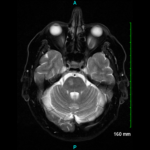According to Dr. Levy, these benefits were seen in 6% of patients who achieved the targeted UA goal compared with patients who did not achieve this goal.
The study also found that CKD stage was an important factor in which patients improved after UA lowering therapy, with 3% of patients with stage II CKD improving and nearly 10% of patients with stage III CKD stage improving. The study found no benefit in patients with stage IV CKD.
These results, emphasized Dr. Levy, indicate the need to monitor patients with hyperuricemia and CKD. “Consider utilizing urate-lowering therapy in addition to the usual ‘tools’ of optimizing glucose and blood pressure control,” he said, “along with ACE and ARBs to stabilize and possibly improve renal function.”
Dr. Levy also pointed out the need for rheumatologists to better educate primary care physicians on the need to assess and monitor uric acid levels not only for diagnosing and treating gout, but also for the connection between high uric acid levels and renal disease. “Numerous studies show that primary care physicians under-diagnose and under-treat this generally, easily controlled disease,” he said. “This led to unnecessary pain and lost function by millions of patients.”
Saying that the current guidelines on uric acid give mixed messages and focus largely on gout, he emphasized that published data show the importance of normalizing uric acid for CKD benefit (current study) as well as for cardiac and cerebral benefits. “To focus only on the aspect of acute gout attacks is likely to lead to more [emergency department] visits, with the associated costs, lost work and wages, and patients who ultimately develop renal, cardiac and cerebral problems that could be avoided simply by using a well-tolerated relatively inexpensive medication,” he said.

